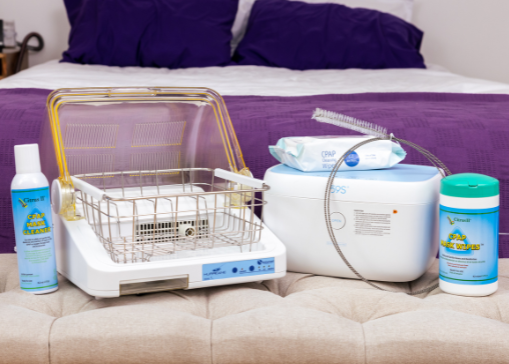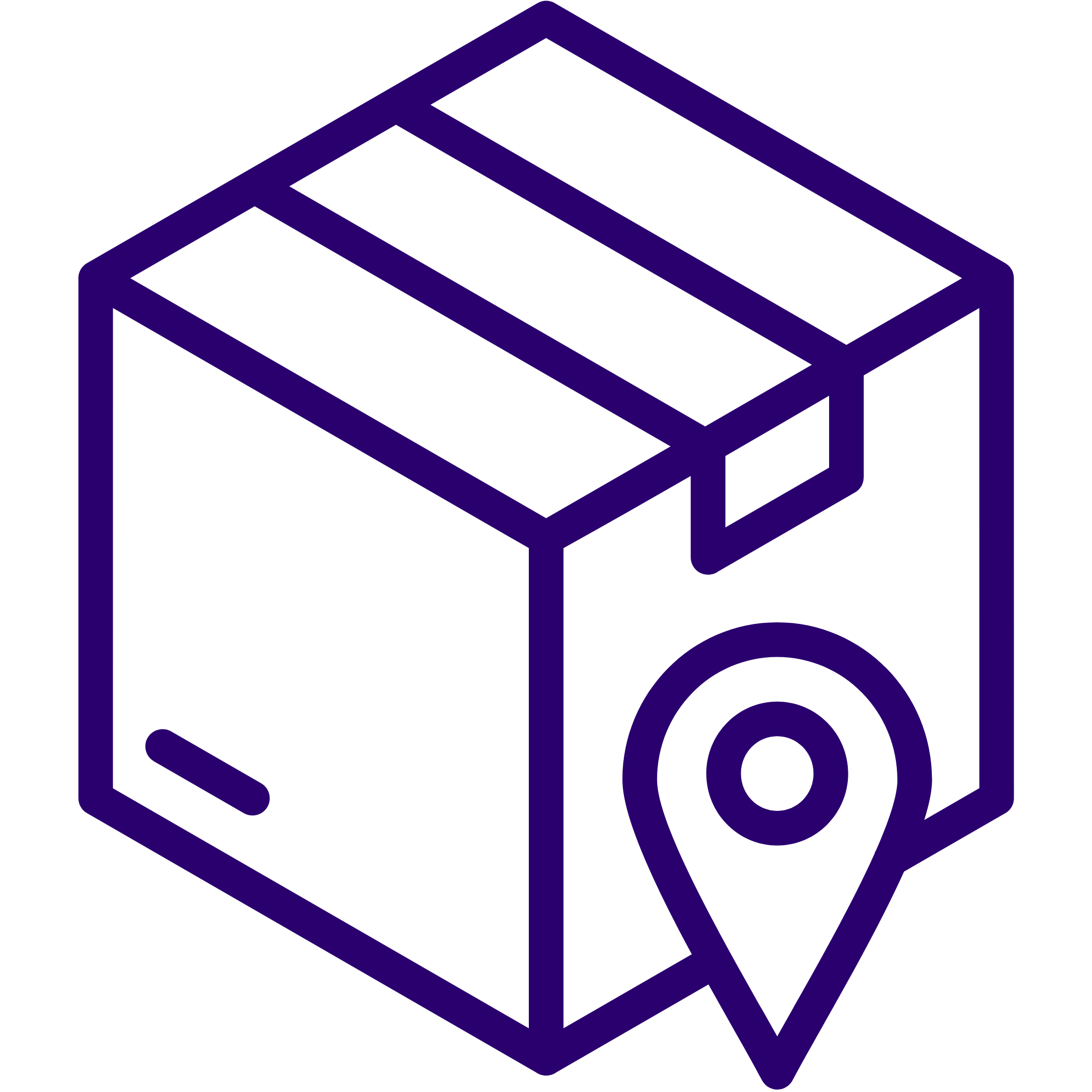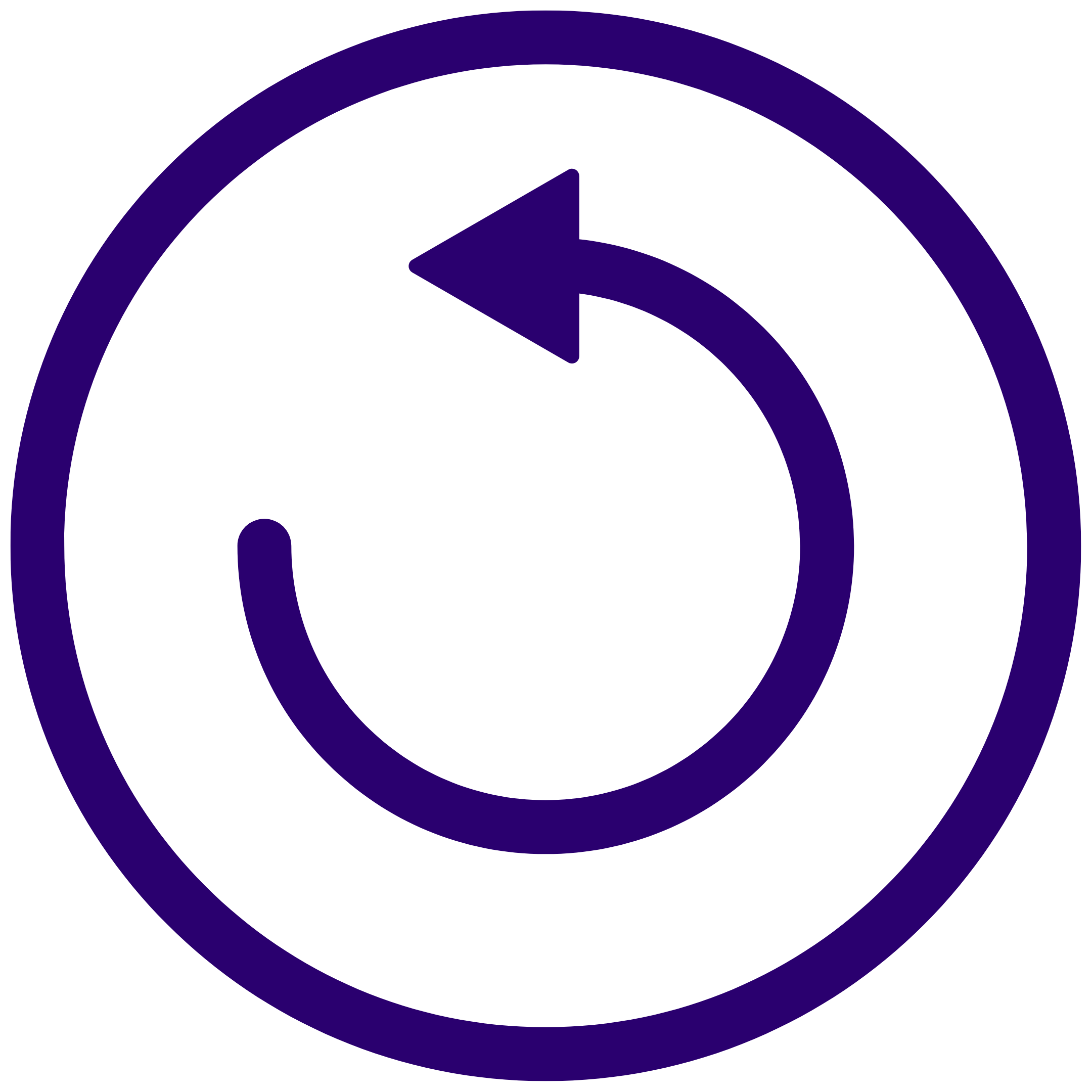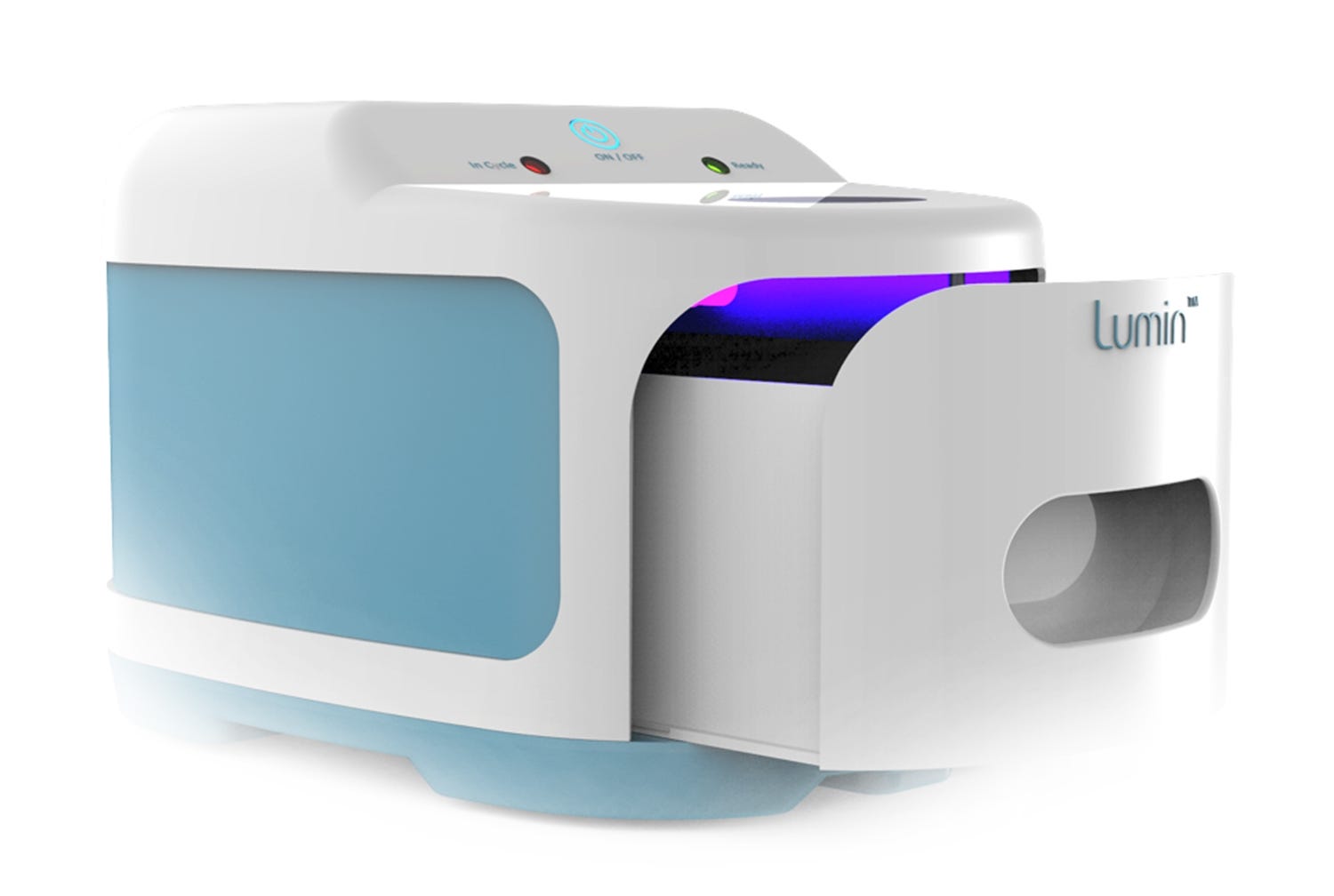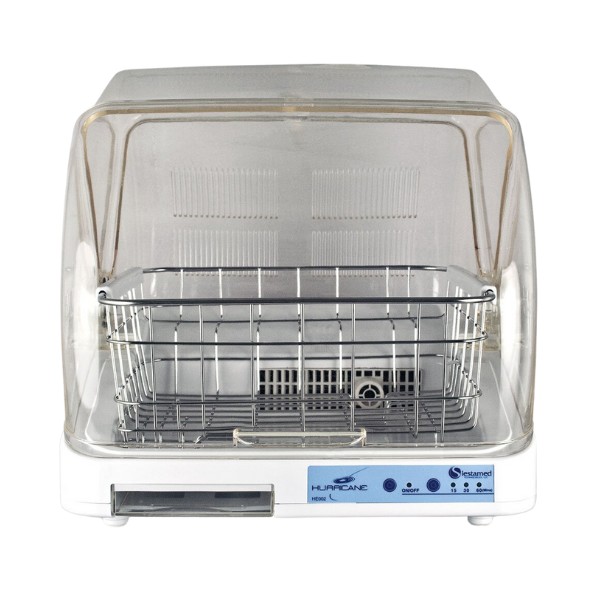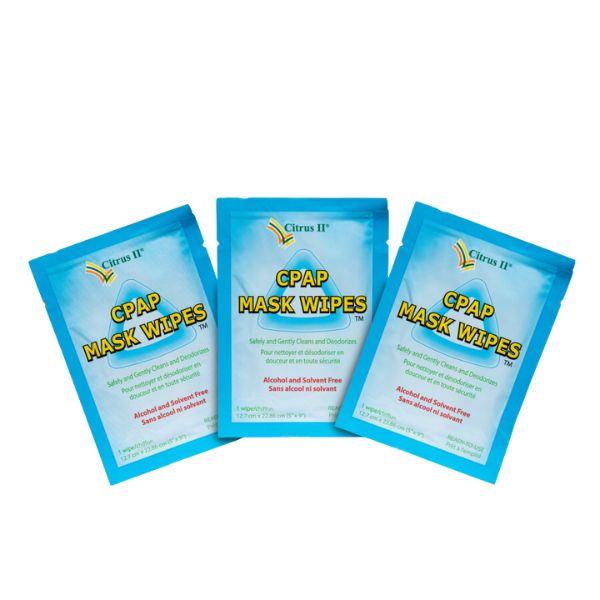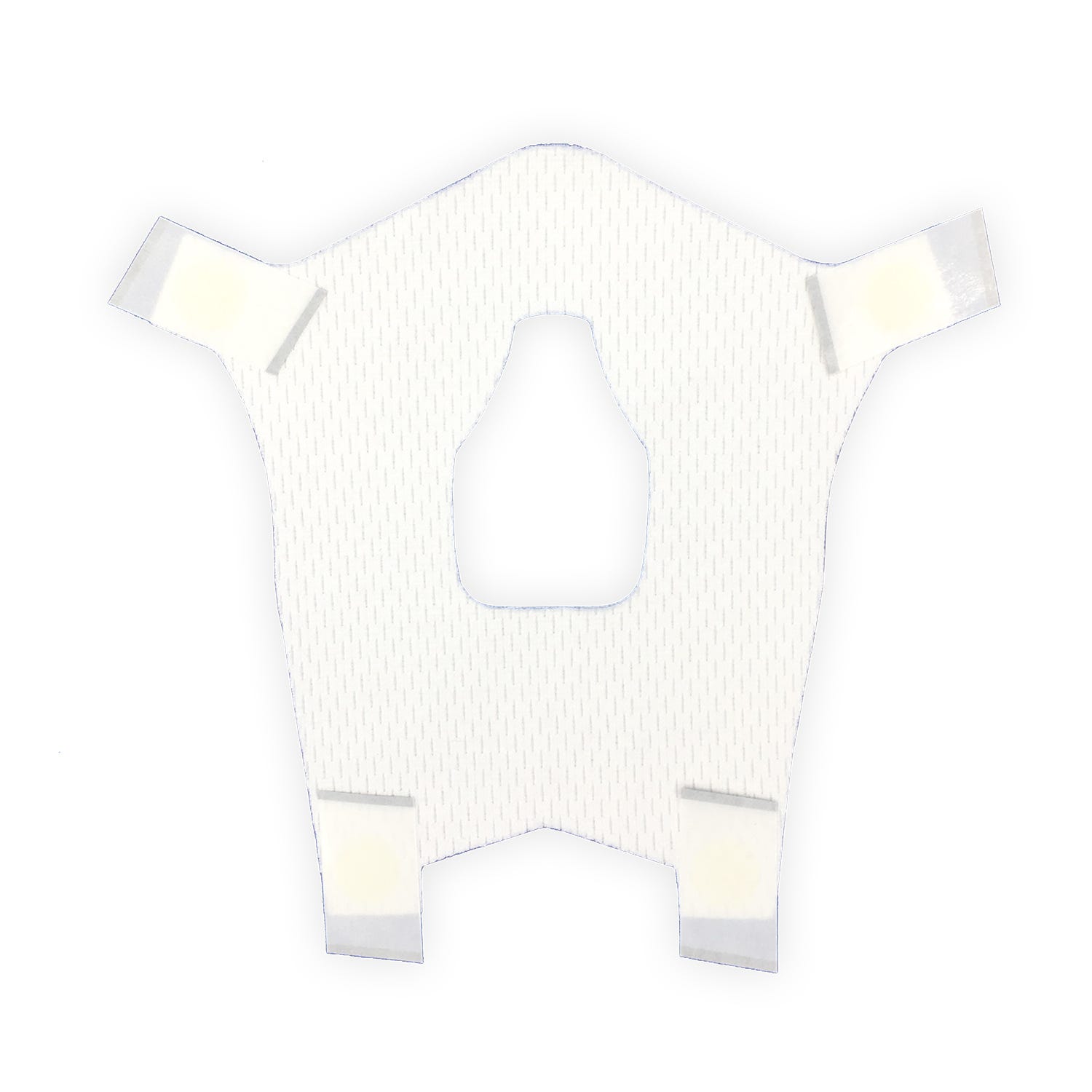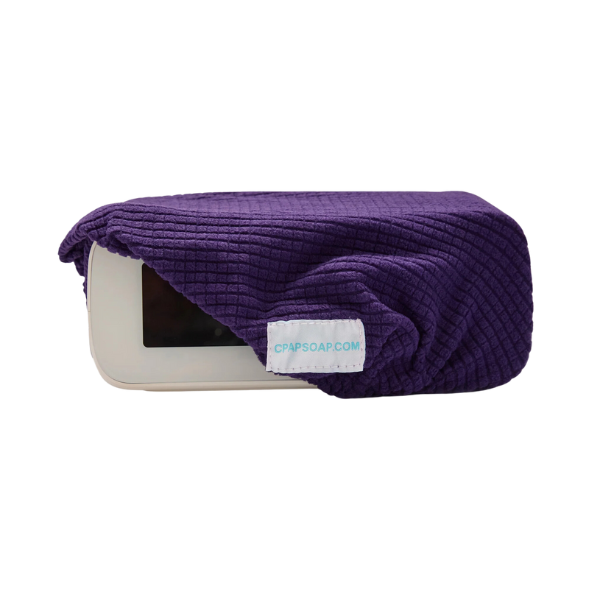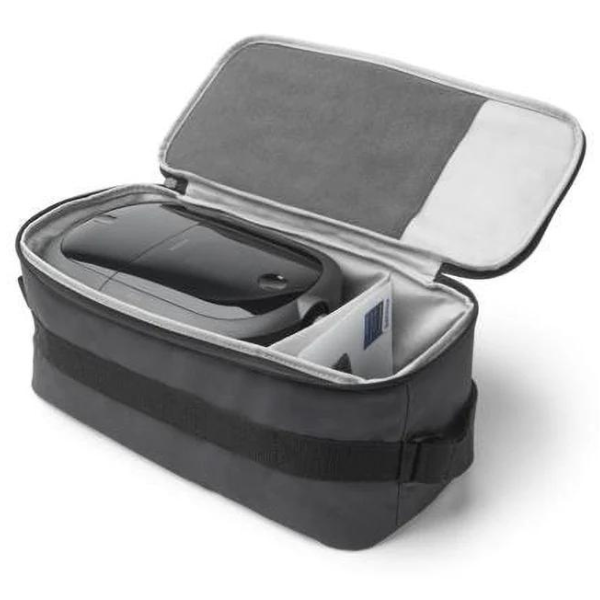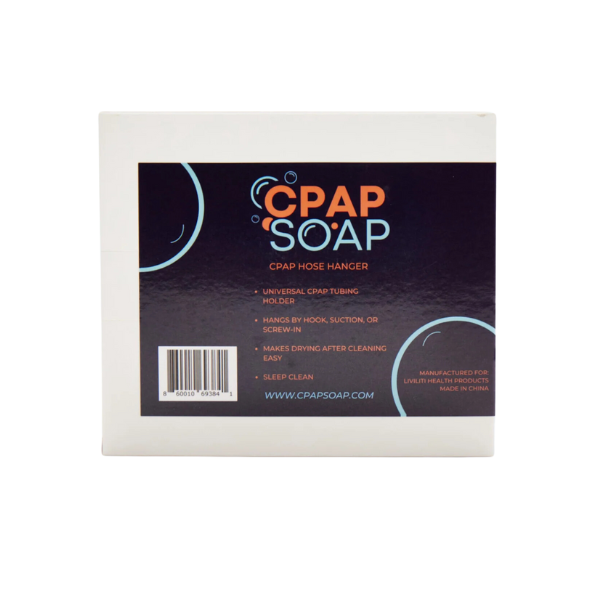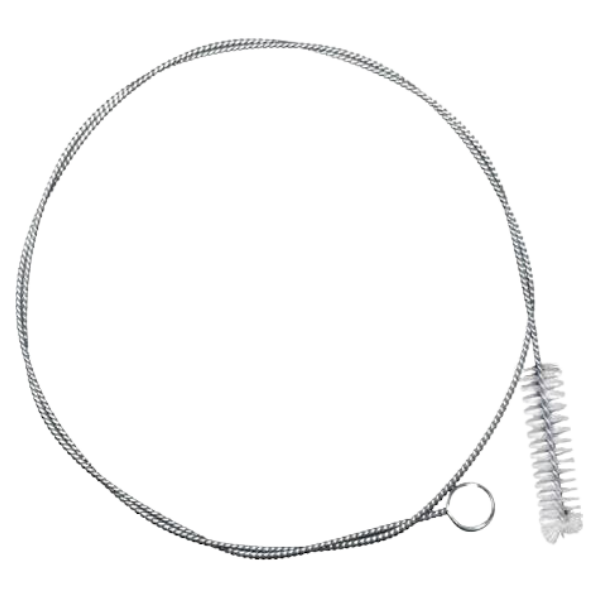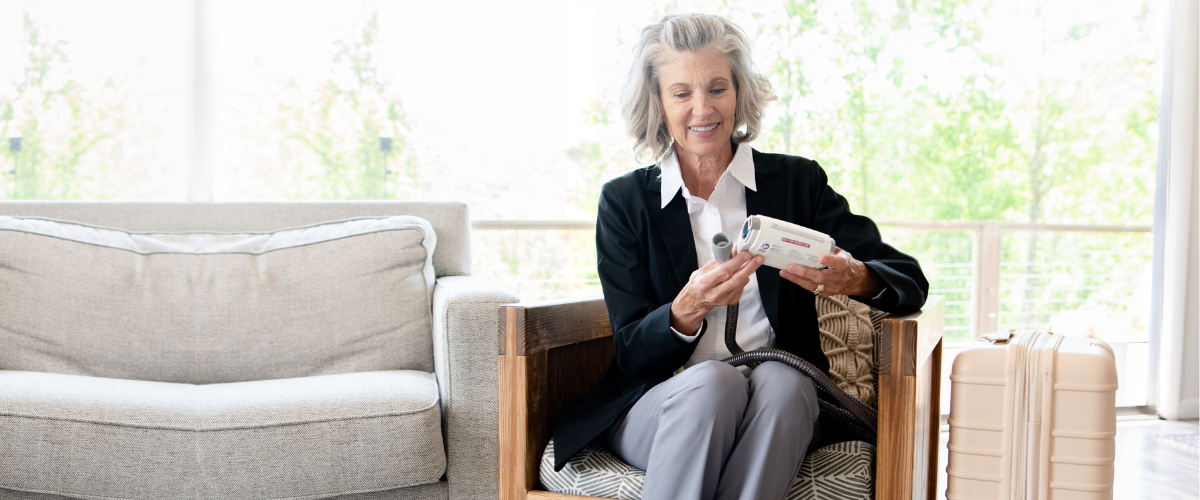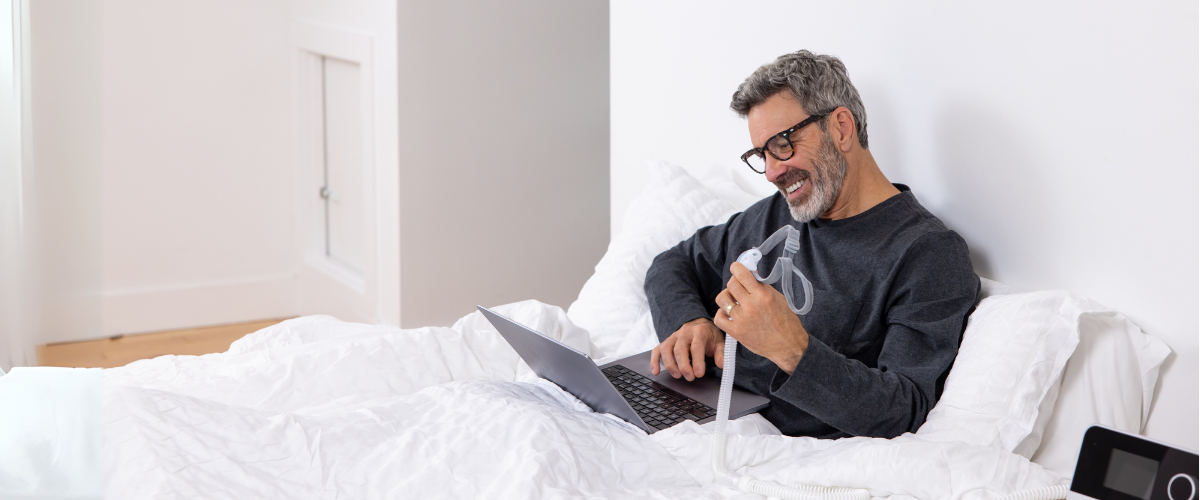How to Clean Your CPAP Supplies & CPAP Machine (And Why It’s Important)
- Jul 10, 2025
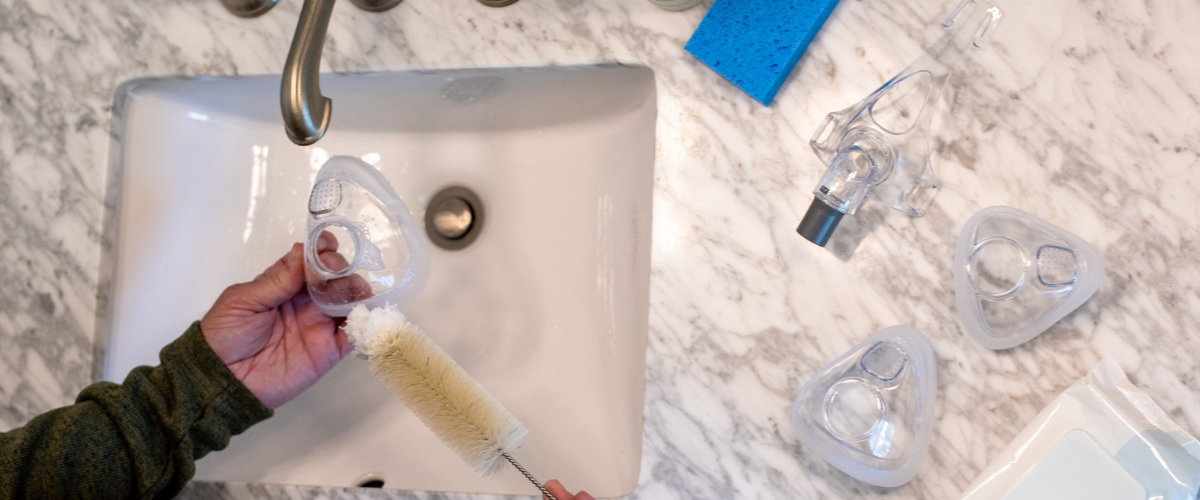
Once CPAP therapy becomes part of your nightly routine, it’s time to take on another important habit: regular cleaning of your CPAP device and CPAP supplies. A proper cleaning routine doesn’t just protect your health, it can also improve the performance and extend the life of your equipment.
With so many methods and products available, this guide will walk you through the most simple and effective ways to clean your CPAP machine and CPAP equipment and how to keep your supplies clean when you travel. Plus, we’ll cover the health risks of skipping regular maintenance and cleaning.
How to Clean Your CPAP Machine and Supplies
Ranging from basic household items to advanced sanitizing technology, the good news is that there are several safe and effective ways to clean your CPAP equipment. Here’s how to build a routine that works for your lifestyle.
Cleaning With Soap and Water (Weekly)
Handwashing your supplies with good, old-fashioned soap is still one of the most effective ways to clean your CPAP supplies. You don’t need expensive cleaning products because just a few items from your kitchen cabinet can get the job done.
What you’ll need:
• Warm water (tap water is fine, distilled water is better)
• Gentle, ammonia-free mild soap (like dish soap or antibacterial hand soap)
• A clean sink, tub, or container
Steps:
1) Disassemble all removable parts: CPAP mask components (cushion, headgear, mask frame, and individual pieces), machine tubing, and water chamber.
2) Thoroughly clean the sink or container you’ll be using.
3) Fill with at least 5 inches of warm (not hot) water. Ideally, you want the temperature to be as warm as you’d use to wash your hands.
4) Add a small amount of soap. Approximately 3–5 drops per few gallons of water should be the perfect amount.
5) Mix together with your hands until you achieve soapy water.
6) Submerge the supplies fully, ensuring the inside of the water chamber fills up.
7) Let the supplies soak for 5–10 minutes.
8) Rinse each part thoroughly with clean water to remove soap residue.
9) Lay the CPAP parts on a clean towel or drying mat and allow them to air dry completely.
10) Once dry, reassemble your system and prepare for your next night’s sleep.
Pro Tip: Avoid heavily scented soaps and anything with ammonia or bleach. Those types of products can damage your equipment or leave behind irritating residue.
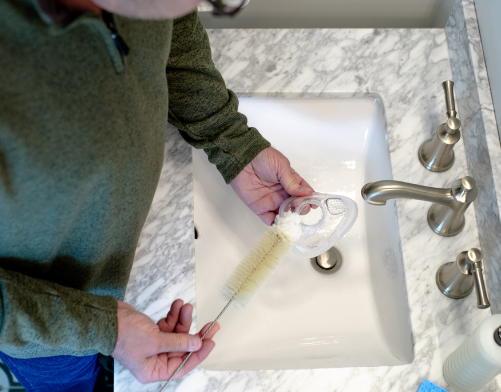

Sanitizing With Distilled White Vinegar (Monthly or Biweekly)
Vinegar is a natural, affordable disinfectant that kills bacteria, mold, and even some viruses, making it ideal for sanitizing your CPAP products.
What you’ll need:
• White distilled vinegar (important: make sure you use food-grade vinegar; do not use vinegar or vinegar-based products that are intended for use as household cleaning supplies)
• Warm water (tap water is fine, distilled water is better)
• A clean sink, tub, or container
Steps:
1) Disassemble all CPAP components as above.
2) Fill your sink or basin with a mixture of 1 part distilled white vinegar to 1 part warm water (equal parts water to vinegar).
3) Submerge mask parts, tubing, and humidifier chamber.
4) Let soak for 20–30 minutes.
5) Rinse thoroughly (the vinegar smell will fade once dried).
6) Place supplies on a clean towel and allow them to air dry fully before reassembling.
Bonus: If you can, use distilled water for the vinegar mixture to avoid mineral buildup.
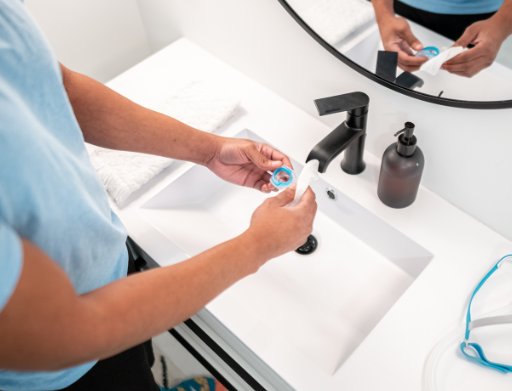

CPAP-Specific Cleaning Devices
For those with limited time, limited mobility, or just a preference for speed and convenience, a variety of modern CPAP cleaning devices can take the effort out of CPAP hygiene.
Ozone Cleaners
These devices use activated oxygen (ozone, or O₃) to sanitize your equipment. The ozone gas circulates through tubing, masks, and chambers, breaking down bacteria, mold, and viruses at a molecular level.
• No soap, water, or manual scrubbing required.
• Ozone reverts back to breathable oxygen after each cycle, leaving minimal odor,
Note: In recent years, there has been some conversations about the safety of using ozone cleaners. Ozone cleaning can be a safe and effective option for your cleaning routine. It is recommended and important to note that ozone devices should be used with proper ventilation and in accordance with the device manufacturer’s instructions to avoid excess ozone exposure. The FDA recommends using an Ozone sanitizing device that operates independently from your CPAP machine for the highest level of both safety and cleaning efficacy.
UV-C Light Cleaners
Ultraviolet sanitizers use UV-C light to kill bacteria, viruses, and fungi.
• UV-C light CPAP cleaners are perfect for those sensitive to odors, chemicals, or ozone.
• Typically come in enclosed chambers for safe use.
• Won’t replace manual cleaning entirely, but an excellent supplement.
Other Products to Help in Your CPAP Cleaning Routine
If you're looking for CPAP-specific cleaning solutions, especially for on-the-go, there are many great additional and safe options out there.
CPAP Equipment Dryers
Moisture left in your equipment is a breeding ground for bacteria and mold. Equipment dryers like the Hurricane CPAP Dryer use gentle, static warm air to circulate through your tubing and supplies.
• Speeds up drying time significantly.
• No chemicals, UV, or ozone involved.
• Especially useful in humid climates or for users who clean often.
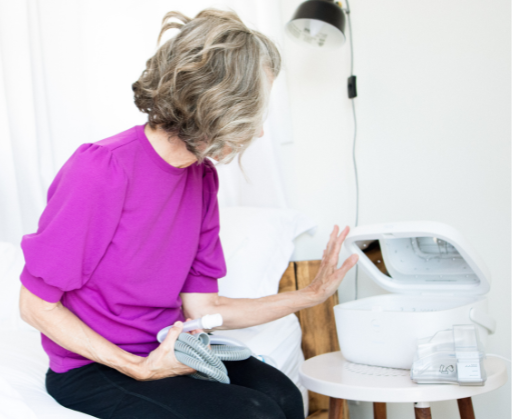

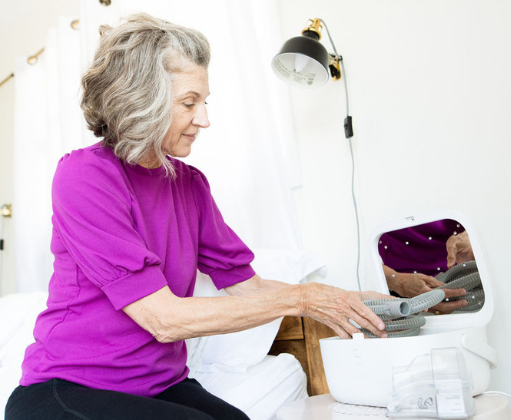

Keeping Your CPAP Clean While Traveling
Just like you wouldn’t skip brushing your teeth on a trip, you shouldn’t skip cleaning your CPAP supplies either. Unfamiliar environments can increase your risk of exposure to new allergens, dust, and contaminants.
Here are some travel-friendly products and tips…
CPAP Cleaning Wipes: A quick wipe-down for your mask each day can make a big difference. A damp cloth is also a great, quick way to handle daily cleaning on-the-go.
Mask Liners: These disposable fabric barriers help keep your mask cleaner longer and reduce facial irritation.
Mini Cleaning Sprays or Soaps: TSA-friendly options are available from most CPAP supply brands.
Portable Cleaning Devices: Some UV or ozone sanitizers are designed specifically for travel and can easily fit in a suitcase.
Carrying Bags or Storage Cases: Keeping supplies stored safely and dust-free is half the battle.
Accessories: Gentle brushes, hose hangers, drying mats, and other convenient accessories can help immensely with the cleaning and drying process (especially if you're in a time crunch).
Reminder: Be sure to empty out and dry your water chamber before packing it to prevent mold or leaks during travel.
Why It’s Important to Clean Your CPAP Supplies (Plus, the Risks of Not Cleaning)
If you’re using a CPAP machine every night, you’re breathing in air pushed through your mask, tubing, and humidifier. If those components are dirty, you’re inhaling everything living inside them (everything from mold spores to bacteria to allergens).
Common Issues from Dirty Equipment
• Sinus infections
• Bronchitis
• Coughing, sneezing, sore throat
• Skin breakouts or rashes
• Mold-related lung inflammation (pneumonitis)
• Pneumonia (in extreme cases)
• Decrease in lifespan of individual CPAP supplies
• Decline in quality of CPAP machine performance
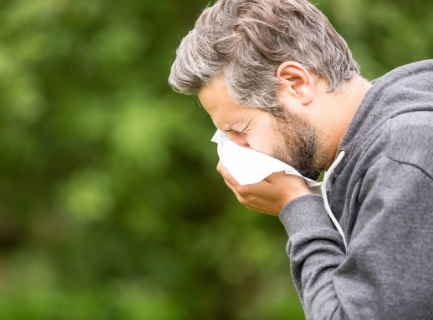

How to Tell If Your CPAP Supplies are Dirty
Look out for these warning signs…
• Smell: Musty or sour odors mean there’s likely mold or bacterial growth in your CPAP parts.
• Appearance: Dusty filters, cloudy tubing, or slimy buildup in the water chamber? Time to clean.
• Constant Skin Irritation: Acne or redness on your face where the mask rests could be from a dirty mask cushion.
• Frequent Infections: Recurring sinus or respiratory issues may mean your CPAP is contaminated.
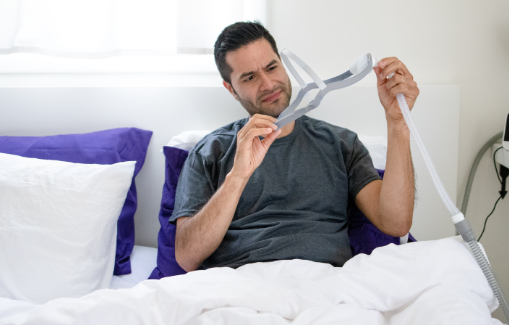

Quick Tips to Avoid CPAP Infections
• Do a weekly cleaning of your mask and CPAP tubing
• Rinse and refill your water chamber/CPAP humidifier daily (this prevents the water from getting stagnant and creating a film inside the water chamber).
• Let all components dry completely before reassembly.
• Always use distilled water in the humidifier to prevent mineral buildup and microbial growth.
• Empty your humidifier chamber daily.
• Consider heated tubing to minimize condensation.
• Use bacterial/viral filters if you’re prone to allergies or illness.
• Never share or buy used CPAP equipment. You don’t know where it’s been or what’s living in it!
How Often Should You Replace CPAP Supplies?
Even the best cleaning routine can’t stop normal wear and tear. As parts degrade, small cracks or micro-tears can harbor bacteria that even thorough cleaning can’t reach.
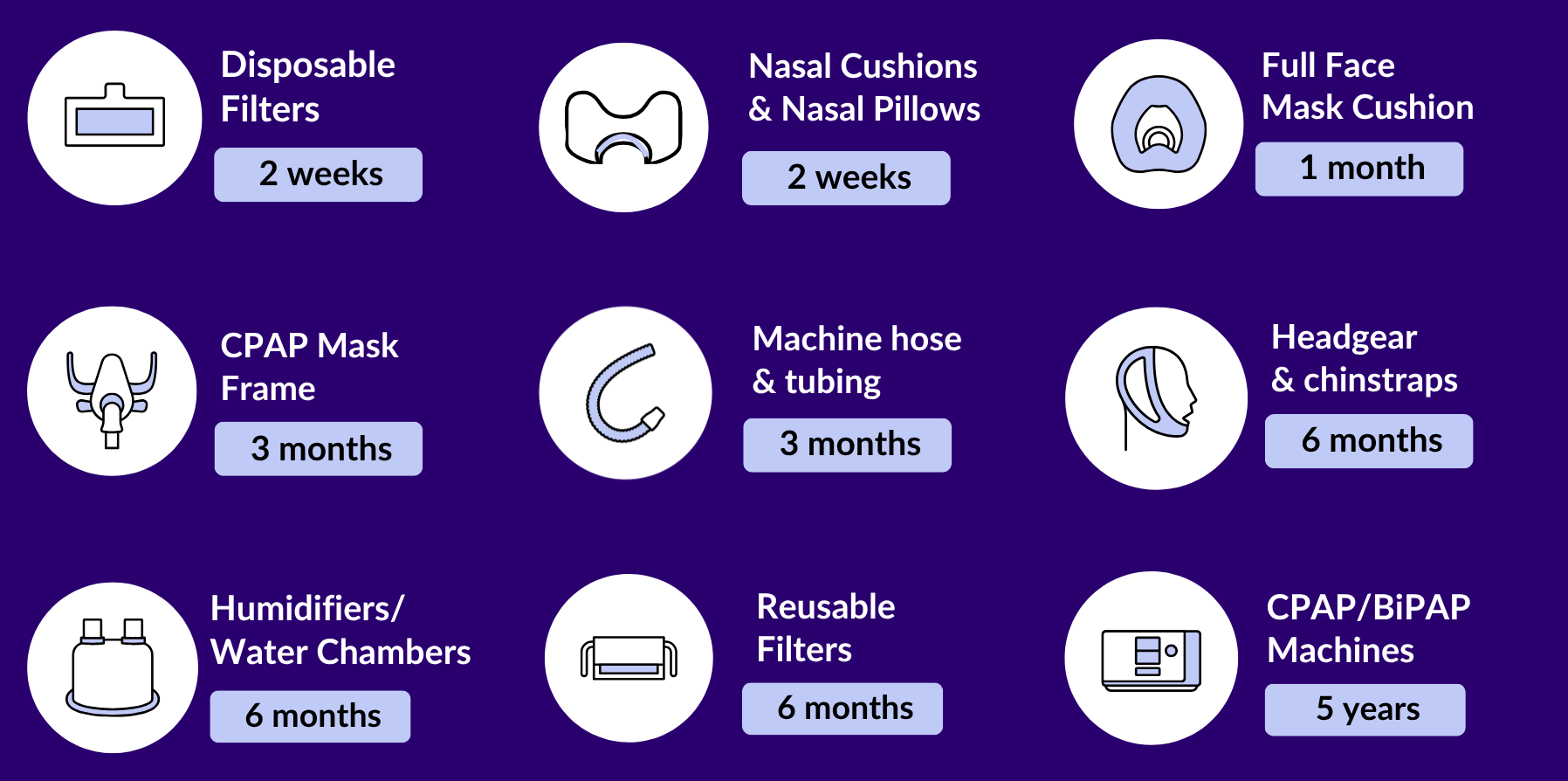

What Proper Cleaning Does for Your Sleep Apnea Treatment…
Taking a few minutes each week to clean your CPAP machine and your individual CPAP supplies may seem tedious, but it’s one of the most important things you can do to protect your health, extend the life of your supplies, and ensure that your therapy is as safe and effective as possible.
Creating and sticking to a proper cleaning schedule can lead to the safest CPAP treatment and help you achieve the most restful nights and best sleep health!
